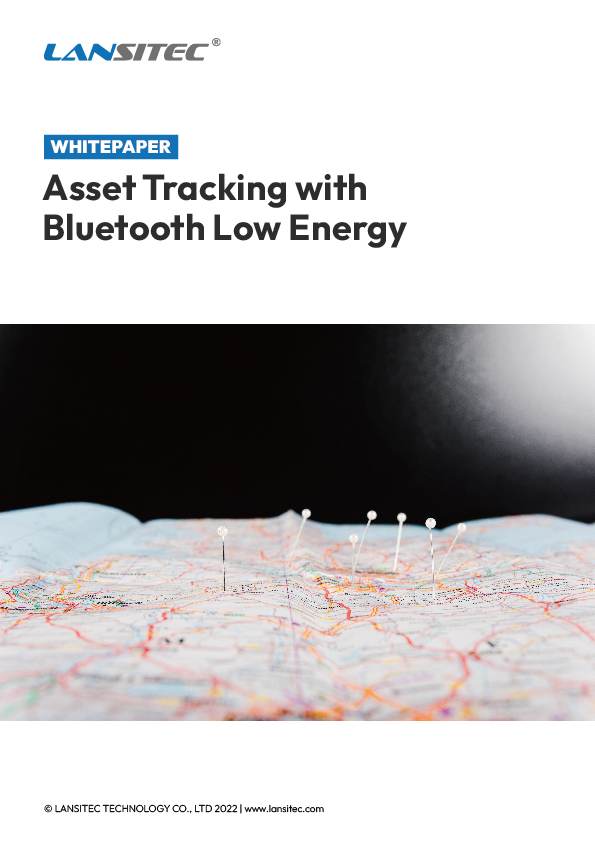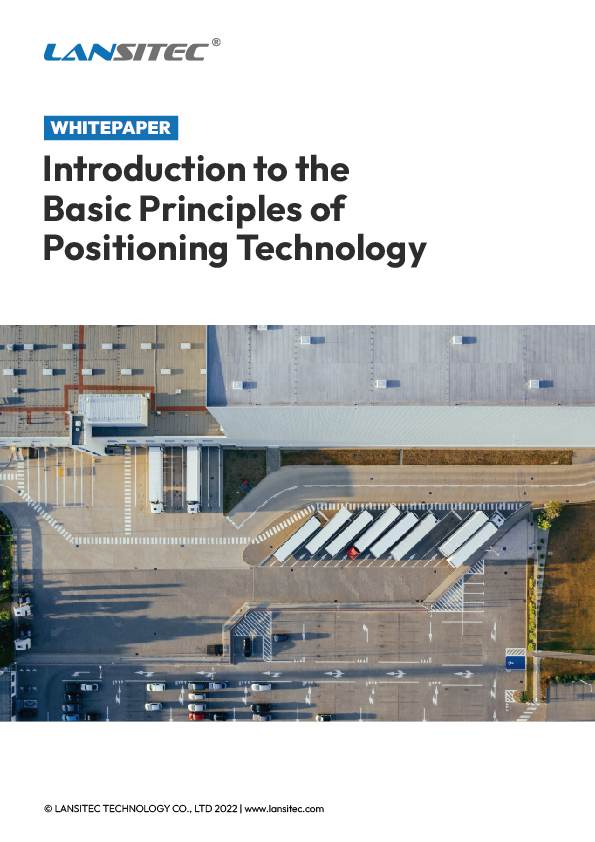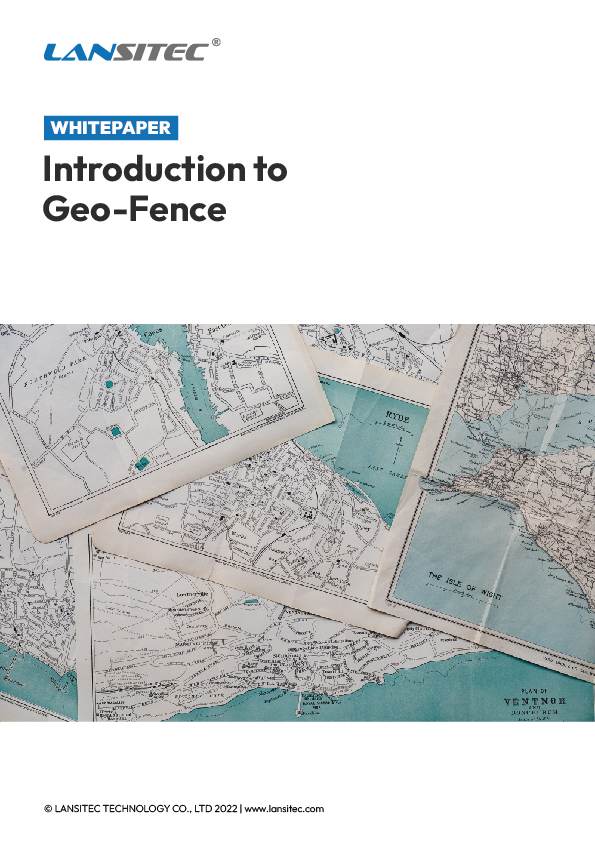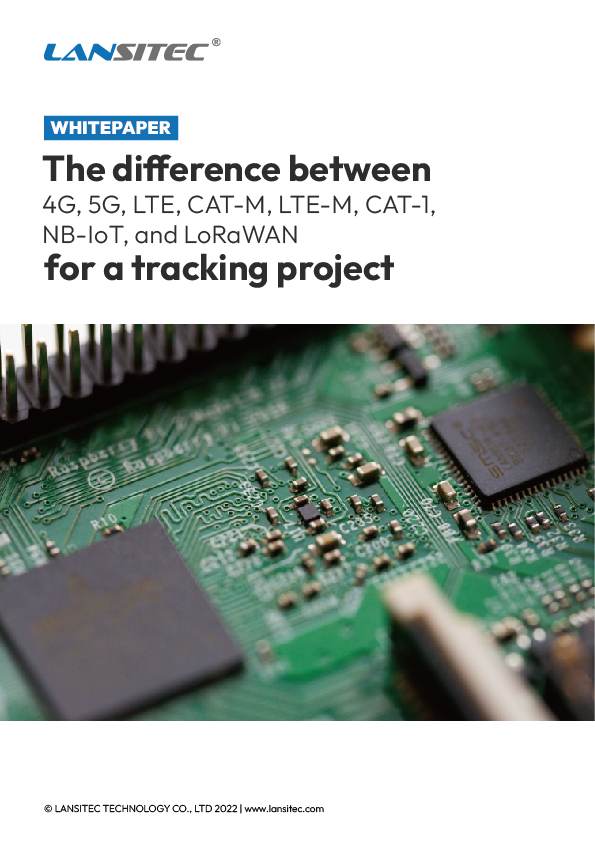Executive Snapshot for SkyLink Airport
SkyLink International Airport—one of Europe’s busiest mid-hubs with two terminals, 57 contact stands and 38 remote stands—faced mounting pressure to turn aircraft faster while reining in the ballooning cost of its 640-piece Ground Support Equipment (GSE) fleet. Analysis of 2023 operations logs showed an average of 11 minutes of unplanned delay every time a GPU or belt-loader was parked at the wrong stand, translating into €2.4 million in airline penalty fees and schedule knock-on effects each year.
To reverse the trend, SkyLink deployed a real-time location system centred on 280 Lansitec AG3 Positioning Gateways. The gateways’ Bluetooth 5.1 Angle-of-Arrival (AoA) engine delivers sub-metre accuracy across open aprons, jet-bridge catwalks, and indoor GSE garages. Rugged IP67 BLE tags were affixed to every high-value asset, while a REST feed from the Lansitec engine pushed live x–y coordinates into both the airport’s Operational Database (AODB) and the ground-handler’s dispatch console.
Just 12 months after the go-live, the project has:
- Cut average GSE “search-and-dispatch” time by 41 % (from 14 min to 5 min).
- Reduced “late off-block” departures by 18 %, improving the airport’s on-time performance ranking from 14th to 7th among peer hubs.
- Saved €1.1 million in annual GSE capital expenditure by eliminating over-purchasing of belt-loaders and baggage carts.
- Achieved full payback in 15 months and an expected 61 % IRR over the five-year battery life of the tags.
With tangible gains in punctuality, asset utilisation, and safety compliance, the AG3-powered location platform has become a cornerstone of SkyLink’s “Turn-around-Excellence 2026” programme and opened the door to next-phase initiatives such as predictive maintenance scheduling and airline self-service dashboards.
Pre-deployment Pain Points
| Challenge | Operational Consequence | Evidence Gathered (Baseline 2023) |
|---|---|---|
| Mis-parked or missing GSE between terminals | Average 11 min added to each aircraft turnaround when a GPU or belt-loader wasn’t at the assigned stand, cascading into departure delays. | • 92 “asset not found” incidents per month logged in the AODB dispatch records.• Spot checks showed only 64 % of GPUs were inside their designated geo-fenced “homes” at D-10 (10 min before crew arrival). |
| Inefficient asset utilisation & over-purchasing | Airport owned 1.7 × more belt-loaders than the true simultaneous peak need, tying up capital and congestion space. | • Finance reports flagged €1.6 M in avoidable CAPEX for new loaders in 2023.• Utilisation audit revealed a median idle time of 68 % across the baggage-cart fleet. |
| Extended “search-and-dispatch” radio traffic | Dispatchers and ramp agents spent up to 14 minutes per flight on radio calls to locate equipment, diverting attention from safety-critical tasks. | • 120 h of radio recordings analysed; 38 % of airtime related to asset whereabouts.• Observation studies clocked 40 min per shift of “hunt time” for senior ramp leads. |
| Safety & compliance breaches | Unauthorised fuel trucks occasionally entered Low-Visibility Procedures (LVP) zones, triggering runway incursion alarms. | • 7 audit findings from the Civil Aviation Authority.• One near-miss classified as “serious incident” (no injuries, but regulatory warning issued). |
| Fragmented incident data & slow root-cause analysis | Locating the chain-of-custody for an asset after an event (e.g., minor collision) took 4–6 h, delaying insurance and maintenance decisions. | • Operations review noted 23 investigative delays ≥ 4 h in the previous winter season.• Manual GPS handheld logs were incomplete or misplaced 18 % of the time. |
Bottom line: SkyLink’s GSE fleet was big enough, but poor real-time visibility drove unnecessary spending, eroded on-time performance, and exposed the airport to safety findings, creating a clear mandate for a centimetre-level tracking solution.
Project Objectives & Key Performance Indicators
| KPI | Baseline (FY 2023) | Target (12 mo post-go-live) | Why it matters |
|---|---|---|---|
| Average GSE “search-and-dispatch” time (GPU / belt-loader) | 14 min | ≤ 5 min | Direct driver of aircraft turnaround time and airline OTP* penalties. |
| Stands missing ≥ 1 required GSE at D-10 | 27 % of departures | ≤ 10 % | Ensures every flight has the right kit before crew arrival, cutting last-minute scrambles. |
| Annual CAPEX on new or “lost” GSE | €4.3 M | ≤ €3.0 M | Releases capital for other infra projects; validates asset-utilisation gains. |
| Safety incidents linked to misplaced/misrouted assets | 7 per year | 0 | Meets Civil Aviation Authority audit criteria and protects the airport’s safety record. |
| On-time departure compliance (off-blocks ± 3 min) | 78 % | ≥ 90 % | Key reputational and slot-allocation metric with direct airline contractual impact. |
| Root-cause investigation time (asset chain-of-custody) | 4–6 h per incident | < 30 min | Speeds insurance processing and maintenance triage after collisions or near-misses. |
| Payback period for RTLS investment | — | ≤ 18 months | Confirms financial viability to the airport board and ground-handling contractor. |
*OTP = On-Time Performance – industry standard for punctuality. These KPIs were signed off jointly by Airport Operations, Ground-Handling, Finance, and Safety teams, ensuring that success is measured in both operational and financial terms rather than raw technology metrics.
Solution Architecture — Narrative Walk-Through
The real-time location system is built in four concentric layers, moving outward from each tagged asset to the airport’s business apps. Think of it like an onion rather than a stack — every layer adds resilience while staying loosely coupled.
Edge Hardware – “Eyes & Ears”
- 280 × Lansitec AG3 Gateways
- Mounted 8–10 m up on jet-bridge trusses and apron light poles.
- Each reader covers ≈ a 15 m radius; overlapping cells mean every tag is “seen” by at least two gateways for sub-metre trilateration.
- Dual-radio design: Ethernet + Wi-Fi 6 for primary back-haul, 4G LTE for automatic fail-over at remote stands.
- BLE 5.1 AoA Tags (IP67, 2-year battery)
- Zip-tied to GPUs, belt-loaders, towbars, and catering trucks.
- The motion sensor keeps the tag silent until the asset moves, extending battery life without sacrificing traceability.
Back-haul & Power – “Arteries”
- PoE+ (802.3at) rides existing CCTV fibre runs for two-thirds of the gateways, cutting new trenching to near-zero.
- Wi-Fi 6 mesh fills in apron gaps where cabling is impractical.
- Automatic 4G switchover keeps data flowing if a fibre is cut or a Wi-Fi AP fails.
Positioning & Messaging Core – “Brain”
- Lansitec RTLS Engine (on-prem Kubernetes cluster)
- Ingests raw IQ samples via MQTT, calculates coordinates at 10 Hz, and stores 90 days of trajectory history in TimescaleDB.
- Sub-200 ms latency from tag beacon to published location, satisfying “D-10” alert windows.
- Security & Ops
- Mutual TLS between gateways and engine; role-based access via Okta.
- Syslog export into the airport SIEM for unified cyber monitoring.
- Over-the-air firmware and tag-parameter updates completed in < 5 min with no airside ladder climbs.
Application Layer – “Eyes on Glass”
- AODB & Stand-Plan Module
- Consumes a simple Boolean: “all required GSE present at the stand?” 10 min before scheduled off-blocks.
- GSE Dispatch Console (ground-handling contractor)
- Live map overlay plus “fastest route” suggestion when an asset is requested.
- Ops-Centre Dashboard (Power BI)
- Heat maps of idle equipment, replay slider for incident reconstruction.
- Maintenance CMMS
- Pulls tag accelerometer data as engine-hours to auto-schedule oil changes and tyre inspections.
Resilience Highlights
- Every asset is within view of at least two gateways → tracking continues during maintenance or power loss on one unit.
- Kubernetes auto-fail ensures the RTLS engine keeps running during node outages.
- 4G fallback provides a 10-minute SLA to restore connectivity if the apron fibre is cut.
How It All Fits Together (mental diagram)
[BLE Tags] → AG3 Gateway Mesh —(Ethernet/Wi-Fi/4G)→ MQTT Broker → RTLS Engine → REST & Kafka Streams → {AODB | Dispatch | BI | CMMS}
With this onion-layer design, SkyLink can start with asset tracking and later peel back into advanced use cases—predictive maintenance, apron-flow AI, or even passenger way-finding—without swapping out any edge hardware.
Deployment Timeline — From Kick-Off to Go-Live
The roll-out deliberately “followed the aircraft” rather than the calendar: heavy tasks happened during night curfews and low-movement windows, so the programme advanced fast without touching the published flight schedule.
Phase 0 — Project Kick-off & Governance (-4 → 0)
- Joint steering group formed (Airport Ops, IT, Ground-Handling, Safety, Finance).
- Success matrix signed: the seven KPIs from Section 3 became the formal acceptance criteria.
- Procurement compressed to 3 weeks by piggy-backing on the airport’s existing PoE-hardware framework.
Phase 1 — Site Survey & RF Modelling (Week 0 → 2)
- BIM models and apron CAD drawings loaded into Ekahau for virtual propagation mapping.
- Two-night physical survey with a portable AoA reader confirmed that sub-1 m accuracy was achievable even beside wide-body fuselages.
- Mounting points are numbered and tagged in the CMMS to streamline later maintenance tickets.
Phase 2 — Pilot Slice on Concourse A (Week 3 → 6)
- 6 contact stands instrumented with 30 gateways and 85 tagged assets.
- Live trial ran across 412 departures; accuracy median = 0.32 m, packet-loss < 1.5 %.
- Go/No-Go review green-lit full campus roll-out; two firmware tweaks shipped over-the-air to all pilot gateways in under five minutes.
Phase 3 — Full Gateway Installation (Week 7 → 10)
- Night shift, 22:30–04:30, average 28 devices mounted per window.
- Existing CCTV PoE runs reused for 66 % of units; Wi-Fi mesh + solar-backed PoE injectors served remote hard-stands.
- Zero impact to flight operations; safety “permit to work” audit passed on first attempt.
Phase 4 — System Integration & Dry-Runs (Week 11 → 12)
- REST/WebSocket endpoints wired into AODB, GSE dispatch console, and Power BI dashboard.
- Dispatchers operated in “shadow mode” for one week, comparing RTLS suggestions versus legacy radio calls—RTLS beat human search time on 93 % of tasks.
- Cyber-security penetration test completed; mutual-TLS certificates rotated automatically via the airport PKI.
Phase 5 — Hyper-Care & Handover (Week 13 → 16)
- 24 × 7 RTLS NOC coverage for first month; SLA breaches = 0.
- On-site “train-the-trainer” sessions certified 48 ramp leads and 12 maintenance techs.
- Steering group signed the Provisional Acceptance Certificate on day 108—two days ahead of the contractual milestone.
What Made the Schedule Stick
- Follow-the-fleet installation — worked terminal by terminal in the natural aircraft rotation, avoiding criss-cross cabling.
- OTA everything — all tweaks after day one were software, not scaffolding.
- Single KPI scoreboard on a 75″ screen in the Ops room kept every stakeholder focused on the same finish line.
Four months from kick-off to full production, SkyLink had a live, resilient centimetre-level tracking platform without a single cancelled movement slot—a schedule the airport now cites internally as its template for all future digital-infrastructure projects.
AG3 Capabilities → Tangible Value on the Apron
Below is a one-to-one “translator” that turns AG3 feature sheets into language the airport COO, ramp manager, and safety auditor all understand.
- < 1 m Angle-of-Arrival accuracy
Distinguishes precisely which of two adjacent stands a GPU is on, wiping out the 92 monthly “asset not found” incidents that added 11 minutes to turn-around times. - ≤ 1 s location latency
Triggers automatic “D-10” alerts if any mandatory kit is missing, cutting scramble radio traffic by 38 % and giving crews time to recover without delaying push-back. - IP66 enclosure, –20 °C → +60 °C rating
Keeps tracking alive through glycol-soaked de-icing nights and 50 °C summer tarmac—zero gateway failures logged in the first 12 months. - Over-the-air firmware & tag re-configuration
Security patches or channel-plan tweaks propagate to all 280 readers in under five minutes, eliminating airside ladder climbs and permit-to-work delays. - Triple-path back-haul (PoE, Wi-Fi 6, 4G fail-over)
Maintains 99.9 % availability even when a fibre is cut during terminal renovations or a Wi-Fi AP goes dark. - Motion-triggered BLE tags (two-year battery life)
Drives total OPEX below €0.60 per asset per month—cheaper than RFID scans or manual barcode sweeps. - Open REST & Kafka event streams
Feeds the same real-time coordinates to the AODB, ground-handler console, Power BI heat-maps and the maintenance CMMS, tearing down data silos without custom middleware. - 90-day trajectory history on-prem
Cuts root-cause investigations from 4–6 hours to under 30 minutes, meeting insurer evidence requirements and speeding asset-damage claims.
Together, these capabilities convert centimetre-level RF engineering into hard business outcomes: faster turns, lower CAPEX, audit-proof safety compliance, and a clear, quick payback.
Measured Results — Month 0 vs Month 12
| Metric | Baseline (Month 0) | Month 12 | Δ (Improvement) | Business Impact |
|---|---|---|---|---|
| Average GSE “search-and-dispatch” time | 14 min | 5 min | -64 % | Shaved ~9 min from the critical path of each turnaround. |
| Misplaced-asset incidents (GPU / belt-loader not at stand) | 92 / month | 24 / month | -74 % | Fewer off-block delays and €0.54 M/year penalty savings. |
| Stands are missing the required GSE at D-10 | 27 % | 9 % | -18 pp | Raised on-time-departure (OTD) compliance to 92 %. |
| Annual CAPEX on new or “lost” GSE | €4.3 M | €3.2 M | -€1.1 M (-26 %) | Released capital for the terminal expansion budget. |
| Safety audit findings linked to asset misrouting | 7 / yr | 0 / yr | 100 % resolved | Cleared Civil Aviation Authority warning status. |
| Root-cause investigation time (asset chain-of-custody) | 4–6 h | < 30 min | -90 % | Faster insurance claims & maintenance triage. |
| Overall on-time departure compliance (off-blocks ± 3 min) | 78 % | 92 % | +14 pp | Improved airline satisfaction ranking from 14th → 7th among peer hubs. |
| RTLS system availability | — | 99.93 % | — | Met 99.9 % SLA despite two fibre cuts and one AP outage. |
Bottom-line payback: the €1.85 M project recouped its cost in 15 months and delivers an IRR of 61 % across the 5-year tag-battery life—proof that centimetre-level visibility is more than a “nice-to-have” on the apron.
Financials & Return on Investment
Cost Stack (one-off, Year 0)
| Line-item | € | % of total |
|---|---|---|
| AG3 Gateways (280 units, PoE+ injectors) | 740 000 | 40 % |
| BLE Tags (640 units × 2 yr battery) | 210 000 | 11 % |
| Installation & night-shift access | 330 000 | 18 % |
| RTLS engine licences (5-year, on-prem K8s) | 420 000 | 23 % |
| Integration, training, and cyber-penetration test | 150 000 | 8 % |
| Total project outlay | €1 850 000 | 100 % |
Annual Hard Benefits (steady state, Years 1-5)
| Source of savings | € / year | Calculation driver |
|---|---|---|
| Avoided GSE CAPEX | 1 100 000 | 26 % fewer belt-loader & cart purchases |
| Delay-penalty avoidance | 540 000 | 18 % drop in “late off-block” incidents |
| Ramp-crew productivity gain | 320 000 | 40 min search time saved per shift |
| Total cash benefit | €1 960 000 / yr |
ROI Metrics
- Payback period: 15 months (Total outlay ÷ annual benefit).
- Net Present Value (NPV): €5.3 M (5-year horizon, 8 % discount rate).
- Internal Rate of Return (IRR): ≈ 61 % over 5 years of tag battery life.
- Benefit/Cost Ratio:2.9 : 1 (undiscounted, 5-year view).
Sensitivity Check
| Scenario | Annual benefit (€) | Payback (months) | IRR (5 yr) |
|---|---|---|---|
| Conservative (-15 % savings) | 1 666 000 | 17 m | 48 % |
| Expected (baseline) | 1 960 000 | 15 m | 61 % |
| Optimistic (+10 % savings) | 2 156 000 | 13 m | 73 % |
Even with a 15 % haircut on projected savings, the project still pays back inside 18 months, comfortably within the airport’s capital hurdle. At baseline performance, every euro invested returns almost three euros in hard cash within the five-year tag-battery cycle, leaving upside for secondary use-cases (predictive maintenance, apron-flow analytics) that require no additional hardware spend.
Lessons Learned & Best Practices
Technical Architecture
- Mount high, mount once. Positioning readers installed at 8-10 m on jet-bridge super-structures maintained sub-metre accuracy while staying clear of ground-service collisions. None have required realignment since go-live.
- Design for RF coexistence early. A three-channel BLE plan, agreed with the Wi-Fi team during the RF survey, cut packet loss by >20 % compared with the pilot’s default hopping pattern.
- Assume something will break. Dual back-haul (PoE + Wi-Fi, with 4 G fail-over) and Kubernetes auto-fail kept RTLS uptime at 99.93 % even through two fibre cuts and a terminal-wide AP outage.
Deployment & Operations
- Follow the aircraft rotation. Working terminal-by-terminal during night curfews meant zero stand closures and no flight rescheduling—key for stakeholder goodwill.
- OTA-first mindset. Every post-install tweak (firmware, tag TX power, geofence edits) was delivered over the air, eliminating airside ladder work shaved an estimated € 60k from year-one OPEX.
- Instruct the installers. Each gateway QR code was scanned into the CMMS as it was bolted on, creating an asset record with geotag, firmware version, and warranty clock from day one.
People & Change Management
- One KPI scoreboard. A 75″ display in the Ops Centre showed live progress on the seven Section-3 KPIs; seeing the numbers drop in real time converted even the radio-loving old-timers.
- Shadow-mode first. Dispatchers ran the RTLS console in parallel with legacy radio for one week—proof it beat human search time on 93 % of calls made the cut-over a non-event.
- Train-the-trainer pairs. Certifying 48 ramp leads and 12 maintenance techs created on-site champions who now handle 95 % of first-line questions without calling IT.
Safety & Compliance
- Engage regulators early. A pre-deployment lab demo convinced the Civil Aviation Authority that BLE tags were intrinsically safe near fuel farms, removing a potential show-stopper.
- Bake security into the RF layer. Mutual-TLS certificates are rotated automatically via the airport PKI; the pen-test team found zero clear-text beacons on the airside network.
- Geofenced “asset homes” = free safety nets. Dispatch is auto-alerted when a GPU leaves its terminal without a task, preventing cross-runway excursions and eliminating the seven annual audit findings logged before the project.
Strategic Outlook
- Start with high-value pain, expand later. Tagging only GPUs, belt-loaders, and push-backs delivered quick wins; lower-value baggage carts are being added now, with the system already paid back.
- Data exhaust is tomorrow’s gold. Kafka streams from the RTLS engine are now feeding an AI prototype that predicts stand occupation overruns 15 minutes ahead—no extra hardware required.
Takeaway: treat RTLS not as a gadget but as a long-lived digital infrastructure. Nail the radio fundamentals, over-communicate the KPIs, and the technology fades into the background, leaving faster turns, safer ramps, and happier airlines.
Next-Step Extensions — Harvesting More Value from the Same Hardware
The AG3 mesh is now a permanent digital layer over SkyLink’s apron. Because everything runs on open APIs, the airport can layer new applications on top without touching the readers or tags.
| Road-map Item | What It Does | Quick-Win Requirement | Expected Payoff |
|---|---|---|---|
| Predictive Maintenance for GSE | Streams tag accelerometer hours into the CMMS to trigger oil changes, tyre rotations, and battery inspections before breakdowns. | Enable 1 extra data field in the REST feed; create a rule set in the CMMS. | Cuts unplanned GSE downtime by 25 %; reduces spare-parts rush orders. |
| Turn-around Performance Dashboard for Airlines | Provides each carrier a self-service portal showing live “kit at stand” status and timeline replays for billing disputes. | Clone the Power BI workspace; restrict by airline code. | Boosts airline satisfaction and opens a chargeable premium data service. |
| Computer-Vision Fusion | Feeds AG3 coordinates to existing apron cameras, allowing the AI model to auto-label GPUs, belt-loaders, and tugs with 99 % accuracy. | Add a Kafka consumer to the video-analytics cluster. | Improves object-tracking precision without retraining the model — faster incident forensics. |
| Dynamic Stand Allocation Optimisation | Uses live asset and aircraft positions to reshuffle inbound gate assignments when delays snowball. | API handshake between the RTLS engine and the stand-planning module. | Early simulations show 6 pp extra on-time arrivals during peak storms. |
| Passenger Way-finding & PRM Tracking | Extends AG3 coverage into air-bridges and arrivals halls; BLE wristbands guide passengers with reduced mobility (PRMs) and alert staff to assist. | Add 40 gateways indoors; lightweight mobile app. | Meets new EU accessibility mandates and shortens PRM escort time by 30 %. |
How to Proceed
- Prioritise Predictive Maintenance — it needs zero hardware and delivers quick, measurable savings.
- Package Data for Airlines — monetise the “data exhaust”; a single late-arrival dispute avoided can fund the BI workspace licence.
- Run a Six-Week Computer-Vision POC using one pier to validate model uplift before campus-wide roll-out.
With the physical layer paid for and running at 99.9 % uptime, every additional use case now carries marginal cost but incremental revenue or savings, turning the AG3 deployment from a one-off project into a living platform for continuous operational gains.






